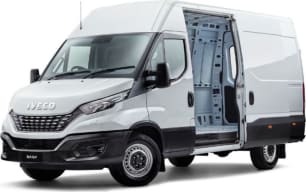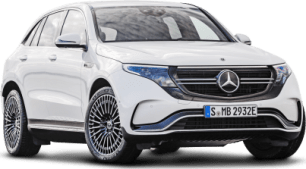It's easy to find a comfortable driving position given the memory foam bucket seat has adjustments for lumbar support, base-cushion rake and driver weight for its inbuilt suspension.
The fold-down inboard armrest, in partnership with the door's armrest, ensures balanced elbow support to reduce neck and shoulder strain.
There are good eyelines to the big door mirrors, with the bottom thirds of each offering wide-angle views. However, with the seat in its most rearward position, the slim column that separates the fixed and sliding glass in the driver's door slightly obscures the outside edge of the driver's door mirror, which suggests the single-cab has more rearward seat travel than the van version we've previously tested.
The electric power-steering is nicely weighted (particularly the new ‘city mode' in tight spots) and the four-wheel disc brakes have good stopping power.
It's a no-brainer the ride quality is harsh over bumps when unladen, given it's designed to cope with 8.0-tonne GCMs.
Fact is, in a working role, this vehicle would rarely if ever be driven without a substantial load to engage its big rear springs, which we did when forklifting 1.3 tonnes onto the tray. With driver this payload totalled 1.4 tonnes, which was still more than 600kg below its peak rating (with tray).
Even so, it was enough to make the ride much smoother, which is most relevant in this context. The 3.0-litre turbo-diesel maintained good performance hauling this load in city and suburban driving, displaying useful flexibility either side of its 1500rpm torque peak in Eco mode.
We did sample the Power mode, but found the engine was more than capable of handling this task in its economy setting, with the eight-speed auto doing its best work if left alone without the need to manual shift.
The engine only requires 2000rpm to maintain highway speeds, so engine (and tyre) noise is low at 110km/h. The most cabin noise comes from wind-buffeting around the mirrors, bulkhead frame and payload hanging in the breeze.
In Eco mode it performed well on our 13 per cent gradient, 2.0km-long set climb at 60km/h, comfortably hauling this load to the summit in third gear without the need to select Power mode.
Engine-braking on the way down, in a manually-selected second gear, pegged the road speed at 50km/h without the brakes needing to being applied for most of the descent, until it overrode our manual gear selection and shifted up to third when the engine was approaching its 4500rpm redline on overrun.
In our experience, these engine-protecting protocols are common in European commercial vehicles. However, it can spring a surprise if you're leaning on the engine to help restrain a big payload on a steep descent and it suddenly changes up a gear.
Even so, the engine-braking performance was good given its sizeable payload.

